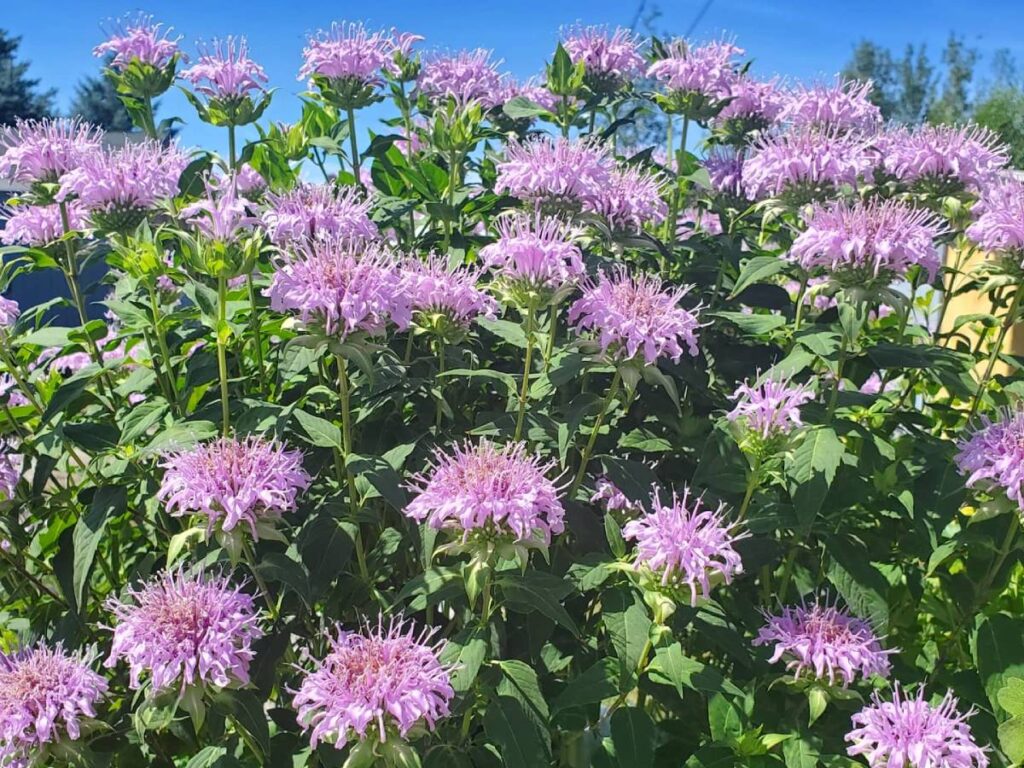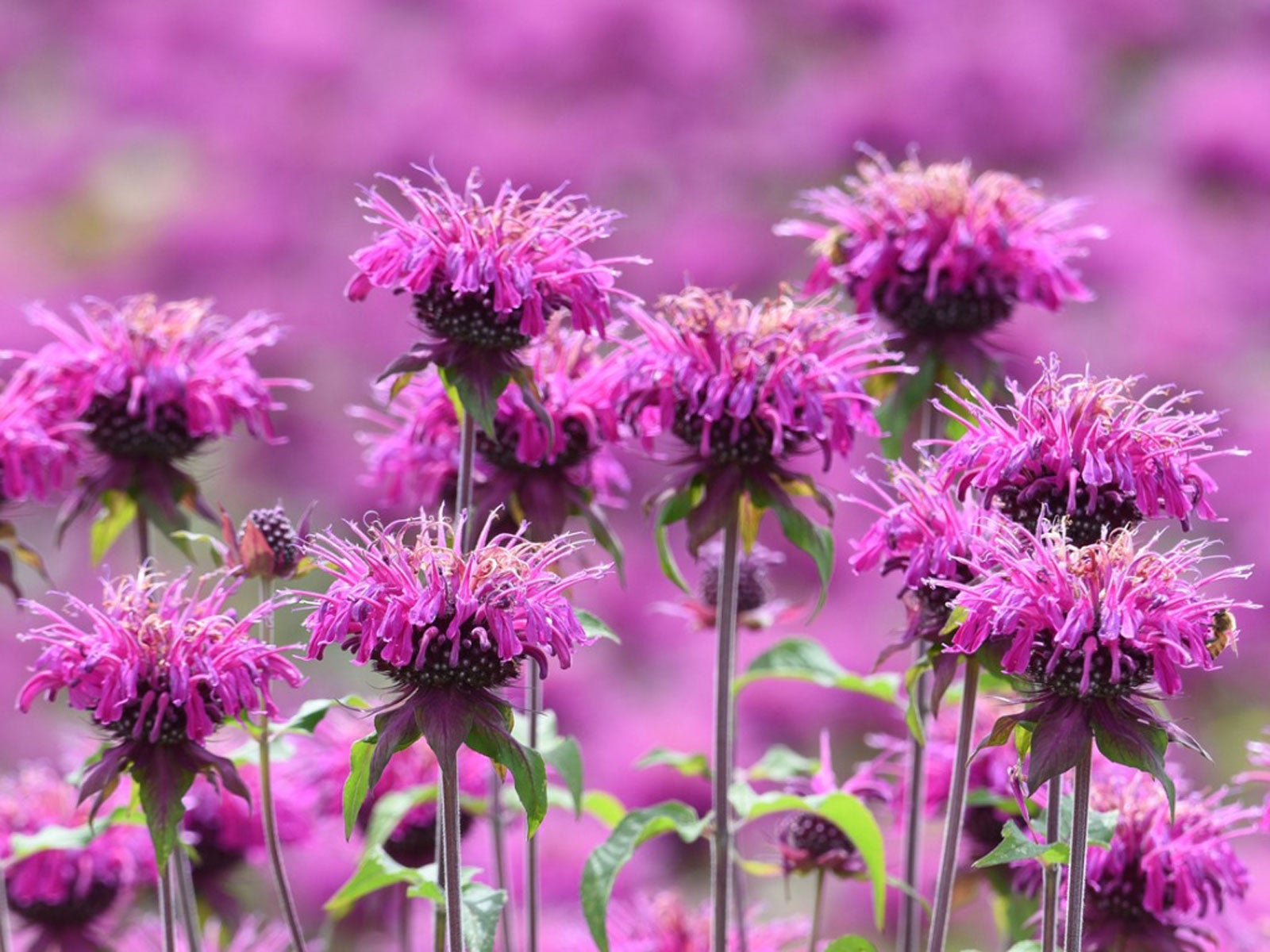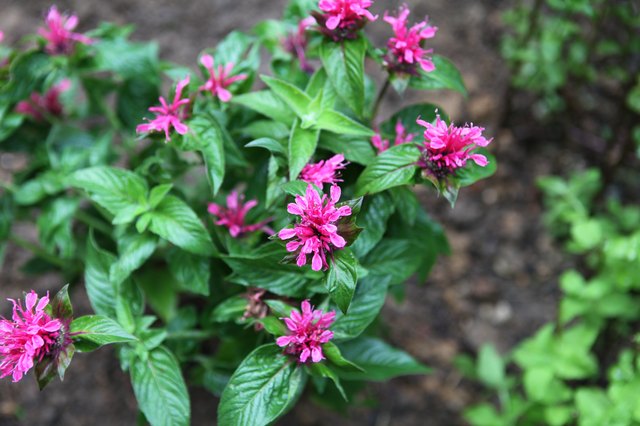What is Deadheading and Why is it Important for Bee Balm?
Deadheading is a simple yet effective gardening technique that involves removing spent blooms from plants to promote healthy growth and encourage more flowering. When it comes to bee balm, deadheading is an essential part of its maintenance, as it helps to increase blooming, improve appearance, and reduce seed production. But do you deadhead bee balm? The answer is yes, and it’s a crucial step in keeping your bee balm plants thriving.
By removing spent blooms, you’re signaling the plant to focus its energy on producing new flowers rather than seed production. This process, called “redirecting energy,” allows the plant to allocate its resources more efficiently, resulting in more blooms and a fuller, more vibrant appearance. Additionally, deadheading helps to prevent the plant from going to seed, which can lead to a decrease in flowering and a less attractive appearance.
But that’s not all – deadheading also has benefits for pollinators. By removing spent blooms, you’re encouraging the plant to produce more nectar-rich flowers, which are a vital source of food for bees, butterflies, and other pollinators. This is especially important for bee balm, which is a popular choice for pollinator gardens due to its high nectar content and fragrant blooms.
So, how often should you deadhead your bee balm? The frequency of deadheading will depend on the specific variety of bee balm you’re growing, as well as the time of year and weather conditions. As a general rule, it’s best to deadhead bee balm every 7-10 days during the blooming season, or whenever you notice spent blooms. By incorporating deadheading into your regular gardening routine, you’ll be rewarded with healthier, more productive plants and a vibrant display of color in your garden.
How to Deadhead Bee Balm for More Blooms
Deadheading bee balm is a straightforward process that requires some basic gardening tools and a bit of knowledge about the plant’s growth habits. To get started, you’ll need a pair of clean, sharp pruning shears or scissors, and a gentle touch to avoid damaging the plant.
The first step in deadheading bee balm is to identify the spent blooms. Look for flowers that have faded, wilted, or dropped their petals, as these are the ones that need to be removed. You can also check the stem for any signs of seed production, as this is a clear indication that the bloom is spent.
Once you’ve identified the spent blooms, use your pruning shears or scissors to cut the stem just above a leaf node. Make sure to cut at a 45-degree angle, and avoid crushing or tearing the stem, as this can damage the plant. If you’re using scissors, be careful not to squeeze the stem too hard, as this can also cause damage.
When to deadhead bee balm is also important. As a general rule, it’s best to deadhead bee balm in the morning, after the dew has dried but before the heat of the day. This helps to prevent the spread of disease and encourages the plant to focus its energy on producing new blooms.
Another important consideration when deadheading bee balm is to avoid over-pruning. While it’s tempting to remove all the spent blooms at once, this can shock the plant and reduce its ability to produce new flowers. Instead, remove the spent blooms in stages, working your way through the plant over the course of several days.
Finally, remember to dispose of the spent blooms properly. You can add them to your compost pile or use them as mulch around the base of the plant. This will help to retain moisture, suppress weeds, and regulate soil temperature.
By following these simple steps and tips, you can deadhead your bee balm with confidence and encourage more blooms to form. So, do you deadhead bee balm? If not, now is the perfect time to start, and with these tips, you’ll be on your way to a more vibrant and productive bee balm plant in no time.
The Benefits of Deadheading Bee Balm for Pollinators
Bee balm is a popular choice for pollinator gardens due to its high nectar content and fragrant blooms. However, the benefits of deadheading bee balm extend beyond just the plant itself, as it can also have a positive impact on the pollinators that visit it. By removing spent blooms, you’re encouraging the plant to produce more nectar-rich flowers, which are a vital source of food for bees, butterflies, and other pollinators.
Deadheading bee balm can also help to improve the overall health of the plant, which in turn can benefit pollinators. By removing spent blooms, you’re reducing the risk of disease and pests, which can harm both the plant and the pollinators that visit it. Additionally, deadheading can help to promote healthy growth and encourage the plant to produce more blooms, which can provide a constant source of food for pollinators.
But why is bee balm such an important plant for pollinators? The answer lies in its unique characteristics, which make it an ideal source of food for a variety of pollinators. Bee balm produces tubular flowers that are rich in nectar, which is a vital source of energy for pollinators. Additionally, the plant’s fragrant blooms are highly attractive to pollinators, which can help to draw them in and encourage them to visit the plant.
So, do you deadhead bee balm? If not, now is the perfect time to start, as it can have a significant impact on the health and well-being of pollinators. By incorporating deadheading into your regular gardening routine, you can help to support these beneficial insects and provide them with the food they need to thrive.
In addition to deadheading, there are other ways to support pollinators in your garden. Planting a variety of nectar-rich flowers, providing a source of water, and avoiding the use of pesticides can all help to create a pollinator-friendly garden. By taking these steps, you can help to support the health and well-being of pollinators, and enjoy the many benefits they provide to your garden.
When to Deadhead Bee Balm for Optimal Results
Deadheading bee balm is a crucial step in maintaining the plant’s health and promoting more blooms. However, timing is everything when it comes to deadheading, and doing it at the right time can make all the difference. So, when should you deadhead bee balm?
The optimal time to deadhead bee balm is during the blooming period, which typically occurs in mid-to-late summer. During this time, the plant is producing new flowers and seeds, and deadheading can help to encourage more blooms and prevent seed production. However, the exact timing of deadheading may vary depending on the specific variety of bee balm and weather conditions.
As a general rule, it’s best to deadhead bee balm in the morning, after the dew has dried but before the heat of the day. This helps to prevent the spread of disease and encourages the plant to focus its energy on producing new blooms. Additionally, deadheading in the morning can help to reduce stress on the plant, which can be beneficial during periods of extreme weather.
It’s also important to adjust your deadheading schedule based on weather conditions and plant growth. For example, during periods of drought or extreme heat, it may be necessary to deadhead more frequently to encourage the plant to produce more blooms. On the other hand, during periods of cool or wet weather, it may be necessary to deadhead less frequently to prevent the plant from becoming stressed.
So, do you deadhead bee balm at the right time? If not, now is the perfect time to start, as it can have a significant impact on the plant’s health and productivity. By incorporating deadheading into your regular gardening routine, you can help to promote more blooms, prevent seed production, and keep your bee balm plant looking its best.
Remember, deadheading is just one part of a comprehensive care plan for bee balm. By combining deadheading with other care techniques, such as fertilization, watering, and mulching, you can help to create a healthy and productive plant that will thrive for years to come.
Common Mistakes to Avoid When Deadheading Bee Balm
Deadheading bee balm is a simple process, but it’s not without its pitfalls. Many gardeners make common mistakes when deadheading bee balm, which can lead to reduced blooms, weakened plants, and even plant death. By avoiding these mistakes, you can ensure that your bee balm plants remain healthy and productive.
One of the most common mistakes people make when deadheading bee balm is over-pruning. While it’s tempting to remove all the spent blooms at once, this can shock the plant and reduce its ability to produce new flowers. Instead, remove spent blooms in stages, working your way through the plant over the course of several days.
Another mistake to avoid is pruning at the wrong time. Deadheading bee balm too early or too late in the season can disrupt the plant’s natural growth cycle and reduce blooms. Instead, deadhead bee balm during the optimal blooming period, which is usually in mid-to-late summer.
Not removing spent blooms completely is another common mistake. When deadheading bee balm, make sure to remove the entire spent bloom, including the stem and any seed pods. This will help to prevent seed production and encourage the plant to focus its energy on producing new blooms.
Finally, some gardeners make the mistake of not deadheading bee balm regularly enough. Deadheading bee balm is an ongoing process that requires regular attention. By deadheading bee balm regularly, you can encourage more blooms, prevent seed production, and keep your plants looking their best.
So, do you deadhead bee balm correctly? If not, now is the perfect time to start. By avoiding these common mistakes, you can ensure that your bee balm plants remain healthy and productive, and provide a constant source of nectar for pollinators.
Remember, deadheading bee balm is just one part of a comprehensive care plan. By combining deadheading with other care techniques, such as fertilization, watering, and mulching, you can help to create a healthy and productive plant that will thrive for years to come.
Combining Deadheading with Other Bee Balm Care Techniques
Deadheading is just one part of a comprehensive care plan for bee balm. To get the most out of your bee balm plants, it’s essential to combine deadheading with other care techniques, including fertilization, watering, and mulching.
Fertilization is a critical component of bee balm care. Bee balm plants require a balanced fertilizer that is high in phosphorus to promote blooming. Apply a balanced fertilizer in the spring when new growth appears, and again in the summer after deadheading. This will help to promote healthy growth and encourage more blooms.
Watering is also essential for bee balm plants. Bee balm prefers well-draining soil and consistent moisture. Water your bee balm plants regularly, but avoid overwatering, which can lead to root rot and other problems. Mulching around the base of the plants can help to retain moisture and suppress weeds.
Mulching is another important care technique for bee balm. Mulch helps to retain moisture, suppress weeds, and regulate soil temperature. Apply a layer of organic mulch, such as wood chips or bark, around the base of the plants in the spring. This will help to keep the soil cool and moist, and prevent weeds from competing with the bee balm for water and nutrients.
By combining deadheading with these other care techniques, you can create a comprehensive care plan that will help to promote healthy growth, encourage more blooms, and support the overall health and well-being of your bee balm plants.
So, do you deadhead bee balm as part of a comprehensive care plan? If not, now is the perfect time to start. By combining deadheading with other care techniques, you can help to create a healthy and productive plant that will thrive for years to come.
Remember, deadheading is just one part of a larger care plan. By incorporating other care techniques, such as fertilization, watering, and mulching, you can help to create a comprehensive care plan that will promote healthy growth and encourage more blooms.
Deadheading Bee Balm Varieties: What You Need to Know
While deadheading is an essential part of bee balm care, the specific deadheading requirements may vary depending on the variety of bee balm you are growing. Different varieties of bee balm have different blooming periods, growth habits, and pruning requirements, so it’s essential to understand the specific needs of your plants.
For example, some varieties of bee balm, such as ‘Raspberry Wine’ and ‘Marshall’s Delight’, are known to produce more blooms and require more frequent deadheading. These varieties tend to bloom more profusely and may require deadheading every 7-10 days to encourage more blooms.
Other varieties, such as ‘Blue Fortune’ and ‘Pink Lace’, may produce fewer blooms and require less frequent deadheading. These varieties tend to bloom less profusely and may only require deadheading every 10-14 days.
In addition to the variety of bee balm, the growth habits of the plant can also affect deadheading requirements. For example, compact varieties of bee balm may require more frequent deadheading to encourage bushy growth and prevent the plant from becoming leggy.
So, do you deadhead bee balm according to the specific variety and growth habits of your plants? If not, now is the perfect time to start. By understanding the specific deadheading requirements of your bee balm varieties, you can help to promote healthy growth, encourage more blooms, and support the overall health and well-being of your plants.
Remember, deadheading is just one part of a comprehensive care plan for bee balm. By combining deadheading with other care techniques, such as fertilization, watering, and mulching, you can help to create a healthy and productive plant that will thrive for years to come.
Conclusion: Why Deadheading Bee Balm is Worth the Effort
Deadheading bee balm is a simple yet effective way to promote healthy growth, encourage more blooms, and support the overall health and well-being of your plants. By removing spent blooms, you’re encouraging the plant to focus its energy on producing new flowers, rather than seed production.
Not only does deadheading improve the appearance of your bee balm plants, but it also supports the health and well-being of pollinators. By providing a constant source of nectar-rich flowers, you’re helping to support the local pollinator population and promote biodiversity in your garden.
So, do you deadhead bee balm? If not, now is the perfect time to start. By incorporating deadheading into your regular gardening routine, you can help to create a healthier, more productive plant that will thrive for years to come.
Remember, deadheading is just one part of a comprehensive care plan for bee balm. By combining deadheading with other care techniques, such as fertilization, watering, and mulching, you can help to create a healthy and productive plant that will provide you with beautiful blooms and a bounty of benefits for years to come.
By following the tips and guidelines outlined in this article, you can help to maximize the blooms of your bee balm plants and create a stunning display of color and beauty in your garden. So why not give it a try? Deadhead your bee balm today and start enjoying the many benefits that this simple yet effective technique has to offer!






:max_bytes(150000):strip_icc()/bee-balm-growing-guide-5204121-hero-530cd469e4e54b939d87ba4a5915ca32.jpg)


:max_bytes(150000):strip_icc()/red-bee-balm-plants-2132327-05-5685c59217d941899ccb26ced59b1fa6.jpg)